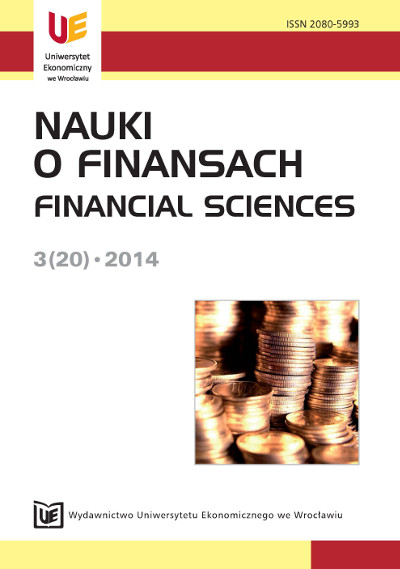Rola kredytu bankowego w finansowaniu przedsiębiorstw w Polsce w latach 1995-2011
The role of bank loan in business financing in Poland in the years 1995-2011
Author(s): Anna Białek-Jaworska, Natalia NehrebeckaSubject(s): Economy
Published by: Wydawnictwo Uniwersytetu Ekonomicznego we Wrocławiu
Keywords: bank loan; long-term bank loan; short term bank loan; system GMM; panel sVAR
Summary/Abstract: The purpose of the paper is to verify the applicability of the pecking order theory to Polish non-finance companies’ inclination to loan-based financing, as well as to indicate the long-term and short-term bank loan use determinants, including the monetary policy impact and the time effect. The analysis covers a sample of 800,000 observations across the period 1995-2011, using the GMM system method. The impact of foreign and government ownership, the share of exports, profitability, liquidity, fixed assets collateral and monetary policy are the determinants of the long-term and short-term bank loan in business financing investigated in the study. For small and medium size enterprises, a negative correlation is found between profitability and both long- and short-term loan financing, as well as between liquidity and short-term loan financing, according to what the pecking order theory assumes. A negative impact of restrictive monetary policy effected via interest rate and rate of exchange channels on Polish firms’ decisions as regards financing their business with short-term bank loan is found. The effect of the current and previous period payment gridlocks on short-term bank loan financing experienced by small and medium size enterprises should help banks adjust their loan offer to SME’s needs. The correlation between the bankruptcy risk level and companies’ short-term borrowing decisions – positive in the group of large firms and adverse among SMEs – should guide banks’ loan committees when modifying their creditworthiness analysis and verification procedures of loan applications. The use of the (S)VAR panel method for investigating the response of the bank loan financing level to the interest rate, exchange rate and credit risk disturbance (shock) are the original aspects of the study. The empirical evidence that a higher share of liquid securities in assets reduces the use of short-term loan and that in small firms its level in the previous period is positively correlated with the use of short-term bank loan financing is the added value of the paper.
Journal: Nauki o Finansach
- Issue Year: 2014
- Issue No: 3 (20)
- Page Range: 60-101
- Page Count: 41
- Language: Polish

